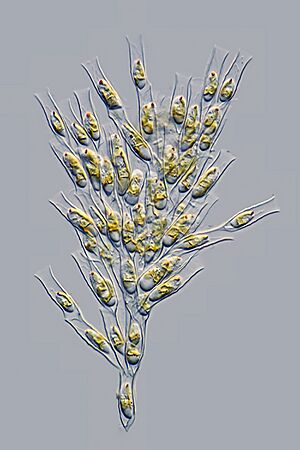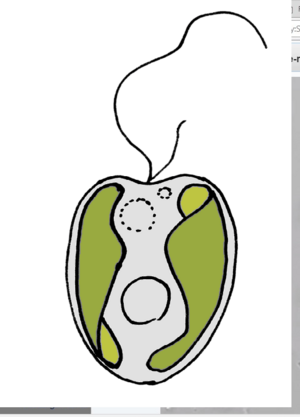Golden algae facts for kids
The Chrysophyceae, also known as golden-brown algae or golden algae, are a large group of tiny living things found mostly in freshwater. They are a type of algae.
Sometimes, the term "golden algae" refers to a specific species called Prymnesium parvum. This type of golden alga can cause problems for fish, leading to many fish dying in certain areas.
Contents
What Are Golden Algae?
Golden algae are very small, often single-celled organisms. They get their golden-brown color from special pigments they use to capture sunlight for energy.
How Golden Algae Move
Most golden algae cells have two special tails called flagella. One flagellum is active and has tiny hairs, pointing in the direction the alga is moving. The other flagellum is smooth and points backward. These tails help them swim through water.
However, some golden algae can move like an amoeba, changing their shape to crawl along surfaces. Others are sessile, meaning they stay fixed in one spot and do not move around.
Special Features of Golden Algae
A key way to identify many golden algae is by their unique protective covering. They form a hard, glass-like shell or cyst made of silicate (a material found in sand and glass). This cyst forms inside their body.
How Golden Algae Get Energy
Scientists believe that the very first golden algae did not make their own food using sunlight. But over time, different groups of golden algae separately developed the ability to do photosynthesis. This means they can use sunlight to create their own food, much like plants do.
Images for kids
-
A pond of hikarimo ("algae of light") in Hitachi, Japan.
See also
 In Spanish: Algas doradas o pardas para niños
In Spanish: Algas doradas o pardas para niños





